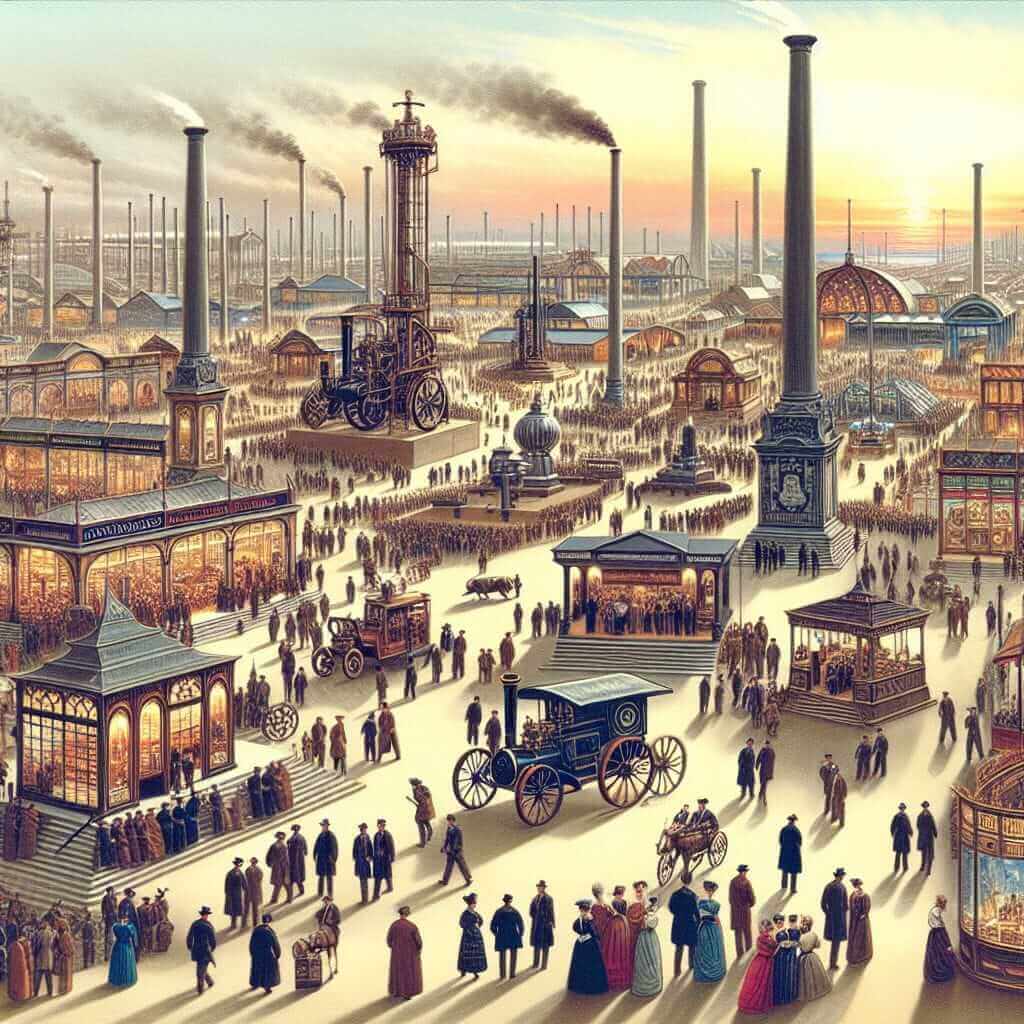The Reading section of the IELTS exam is designed to test a variety of reading skills, including your ability to read for gist, main ideas, details, deduce meaning, recognize a writer’s opinions, attitudes, or purpose, and follow the development of an argument. The topic of the “Historical significance of world fairs” is a recurrent theme that can appear in this section, reflecting its importance in shaping cultures and influencing technological progress. By understanding this topic, you can better prepare for potential future reading passages related to it.
In this article, we’ll provide a complete IELTS Reading practice test on the historical significance of world fairs. We’ll also include questions, answer keys, vocabulary, grammar tips, and advice on how to achieve high scores in the Reading section.
Practice Test: Historical Significance of World Fairs
Reading Passage
Historical Significance of World Fairs
World fairs, also known as international expositions, have been pivotal events for over a century. These grand exhibitions showcase the achievements of nations in various arenas such as technology, culture, and industry. From the Great Exhibition of 1851 in London to Expo 2020 in Dubai, world fairs have profoundly impacted the course of history.
The Birth and Evolution of World Fairs
The concept of world fairs began with the Great Exhibition of 1851 in London’s Crystal Palace. Organized by Prince Albert, husband of Queen Victoria, it was designed to celebrate industrial achievements. Over six million people visited the exposition, which displayed innovations in machinery, manufacturing, and arts from over 30 countries.
Following this success, world fairs became platforms for nations to display their progress and foster international cooperation. Notable fairs include the 1889 Exposition Universelle in Paris, where the Eiffel Tower was unveiled, and the 1904 Louisiana Purchase Exposition in St. Louis, which introduced the world to ice cream cones.
Technological and Cultural Impacts
World fairs have often been the stage for technological debuts. The telephone by Alexander Graham Bell was first showcased at the 1876 Centennial Exposition in Philadelphia. Similarly, the television made its debut at the 1939 New York World’s Fair. These innovations shifted the technological landscape, influencing everyday life worldwide.
Culturally, world fairs encourage the exchange of ideas and traditions. The 1893 Chicago World’s Fair celebrated the 400th anniversary of Columbus’s voyage to America and introduced the Ferris wheel, a symbol of American ingenuity. This cultural exchange fosters greater understanding and collaboration among nations.
Modern-day World Fairs
In contemporary times, world fairs continue to be significant, addressing global issues through themes such as sustainability, mobility, and opportunity. The Dubai Expo 2020, delayed to 2021 due to the COVID-19 pandemic, focused on “Connecting Minds, Creating the Future,” emphasizing innovation and collaboration to tackle worldwide challenges.
In conclusion, world fairs have played an essential role in shaping both technological advancements and cultural exchanges. They remain a testament to human ingenuity and the desire for international fraternity.

Questions
Multiple Choice
-
Where was the Great Exhibition of 1851 held?
- A. Paris
- B. London
- C. Philadelphia
- D. St. Louis
-
What was introduced at the 1904 Louisiana Purchase Exposition?
- A. The telephone
- B. Ice cream cones
- C. The television
- D. The Eiffel Tower
True/False/Not Given
-
The Eiffel Tower was unveiled at the 1889 Exposition Universelle in Paris.
- True
- False
- Not Given
-
The 1893 Chicago World’s Fair introduced the telephone.
- True
- False
- Not Given
Matching Information
-
Match the world fair with what was introduced there:
- A. 1876 Centennial Exposition
- B. 1939 New York World’s Fair
- C. Dubai Expo 2020
- D. 1904 Louisiana Purchase Exposition
a. Television
b. Ice cream cones
c. Telephone
d. Connecting Minds, Creating the Future
Answer Keys
Multiple Choice
- B. London
- B. Ice cream cones
True/False/Not Given
- True
- False
Matching Information
-
- A. c. Telephone
- B. a. Television
- C. d. Connecting Minds, Creating the Future
- D. b. Ice cream cones
Analysis and Learning
Common Mistakes
One frequent mistake candidates make is misinterpreting dates and events. For example, confusing the exposition years or incorrectly matching inventions with the wrong fairs can lead to wrong answers. Pay careful attention to these details and ensure you differentiate between similar events accurately.
Vocabulary List
- Exposition (n): /ˌekspəˈzɪʃən/ A large public exhibition.
- Ingenuity (n): /ˌɪndʒəˈnjuːəti/ The quality of being clever, original, and inventive.
- Fraternity (n): /frəˈtɜːrnəti/ A group of people sharing a common profession or interests.
Grammar Focus
- Relative Clauses: Used to add extra information. Example: “The Great Exhibition of 1851, which was organized by Prince Albert, showcased industrial achievements.”
- Passive Voice: Often used in academic writing to emphasize actions rather than who performed them. Example: “World fairs have been held globally since 1851.”
Tips for IELTS Reading Success
- Skim and Scan: Quickly go through the text to get a general idea and then scan for specific information to answer questions.
- Practice Regularly: Use practice tests consistently to get familiar with different types of questions.
- Build Vocabulary: Maintain a vocabulary list of new words and their meanings.
- Understand Question Types: Know the different question formats and the strategies to tackle each.
- Manage Your Time: Allocate time wisely, ensuring you don’t spend too long on any single passage or question.
By following these tips and practicing with realistic reading passages, you can enhance your reading skills and achieve a high score in the IELTS exam. For further reading on topics like “Cultural Heritage Preservation in Conflict Zones” and “The Influence of Historical Events on Contemporary Society,” visit our related articles for comprehensive insights.